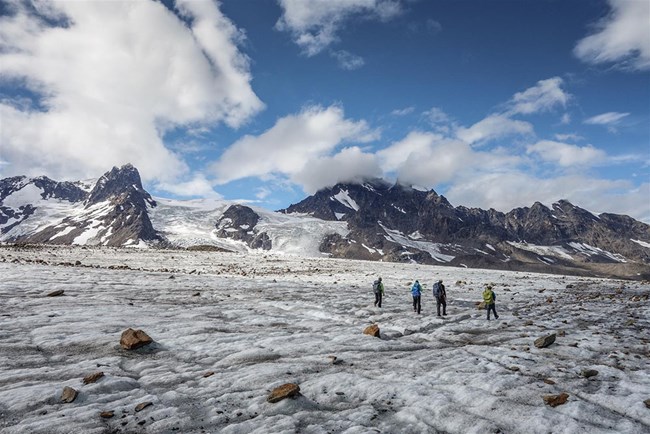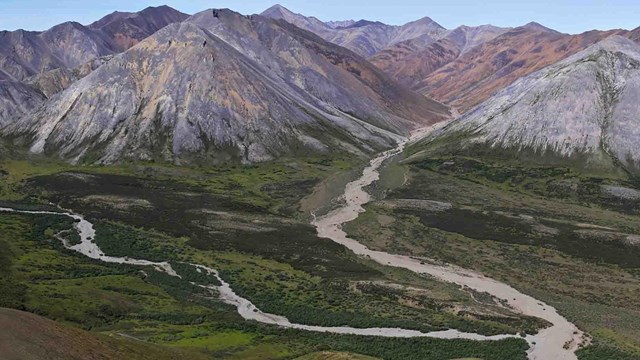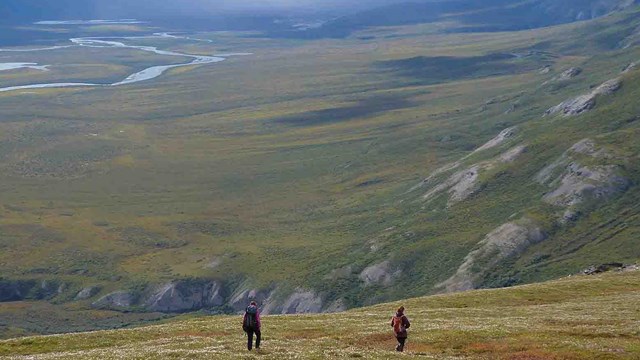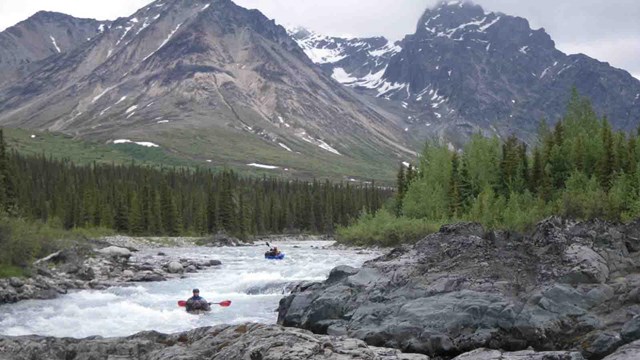
NPS/Peter Landres
Alaska wilderness is unique. More than 90% of National Park Service land in Alaska has some wilderness protection. Designated by ANILCA, 33 million acres of Congressionally designated wilderness in the Alaska parks accounts for about 30% of the nation’s wilderness. Combined with approximately 18 million acres that are eligible for inclusion in the National Wilderness Preservation System, Alaska NPS wilderness encompass watersheds, mountain ranges, glaciers, wetlands, coastlines, volcanoes, tundra, forests, and wild and scenic rivers. These large areas support ecosystem-level processes such as mass migrations of caribou and the natural disturbance of fire that creates a mosaic of vegetation communities. In addition to wildlife and landscapes, Alaska wilderness protects cultural resources, a living laboratory for scientific research, unique recreational opportunities, and subsistence resources. Wilderness areas are homelands of Indigenous peoples, and our current stewardship of these places builds upon the legacy of shared connections between people and the land. One of the most unique aspects of wilderness areas in Alaska is the role they play in providing the opportunity for rural residents to continue a subsistence lifestyle.
WILDERNESS AWAITS. People belong in wilderness and can find many ways to use and value wilderness lands and waters. Wilderness areas are devoted to the public purposes of recreational, scenic, scientific, educational, conservation, and historical use. Alaska wilderness areas help provide for the continuation of a subsistence lifestyle for rural residents, inspire creative endeavors of all kinds, kindle connections between people and the larger community of life, support mental and physical health, and provide a setting for unparalleled wilderness recreation. Wilderness gives us a place to unplug and take a break from the busy world around us. Wilderness areas are some of the best places for scientists and students to learn from our natural world and apply findings to improve how we live, play, and work.

NPS/Maija Lukin
BENEFITS ABOUND. The wilderness designation offers many benefits that are both complementary to, and distinct from, non-wilderness lands contained within parks. Alaska is one of the few places in the United States that has large, intact landscapes. These naturally functioning ecosystems protect clean air and water, are more resilient to climate change, and provide refugia for non-human species where the impacts of climate change are some of the most pronounced anywhere in the world. In Alaska, wilderness protects subsistence resources vital to food security of rural residents. Wilderness has the potential to be of lasting benefit to everyone. To achieve this goal, wilderness stewards protect wilderness character and strive to provide opportunities for people to develop their own sense of connection to wilderness—the intangible, spiritual, symbolic, and experiential connections held by individuals, communities, and cultures. Together, the benefits of wilderness show that wilderness is good for us, our communities, and our planet.

Explore the vast Arctic wilderness.

Wilderness in Alaska is different, in many ways. This is how ANILCA shaped Alaska wilderness.

What makes wilderness wild? What can you expect to experience in wilderness?

How to experience Alaska wilderness. Get out there in the wild!
Learn more about Alaska's wilderness
Last updated: May 2, 2024
